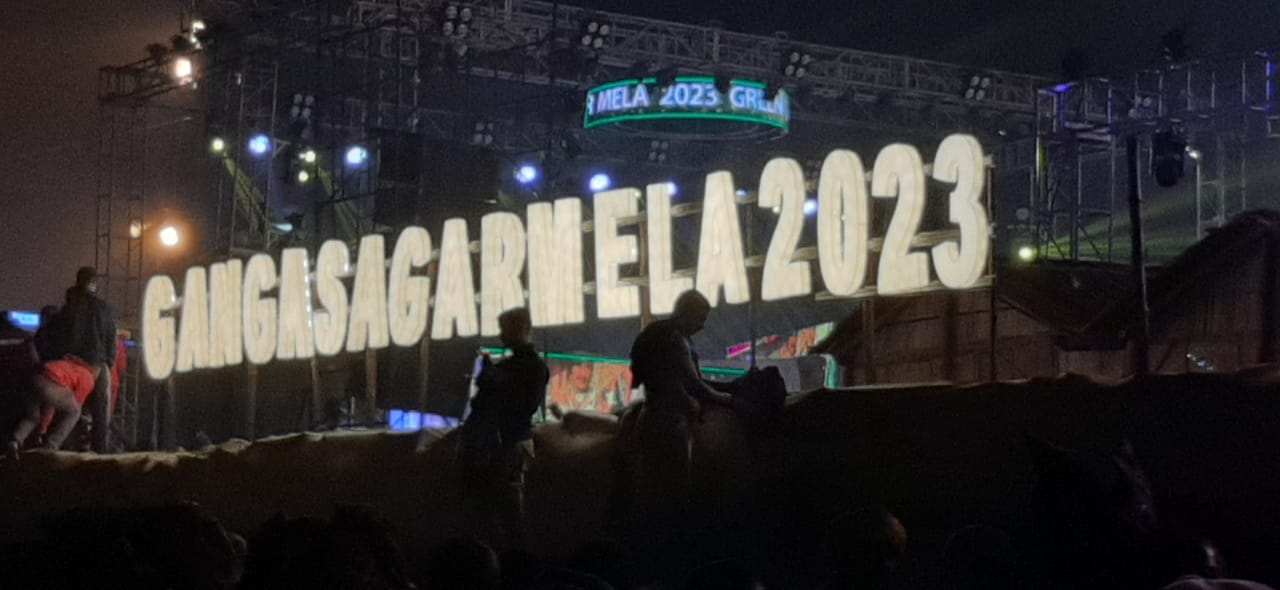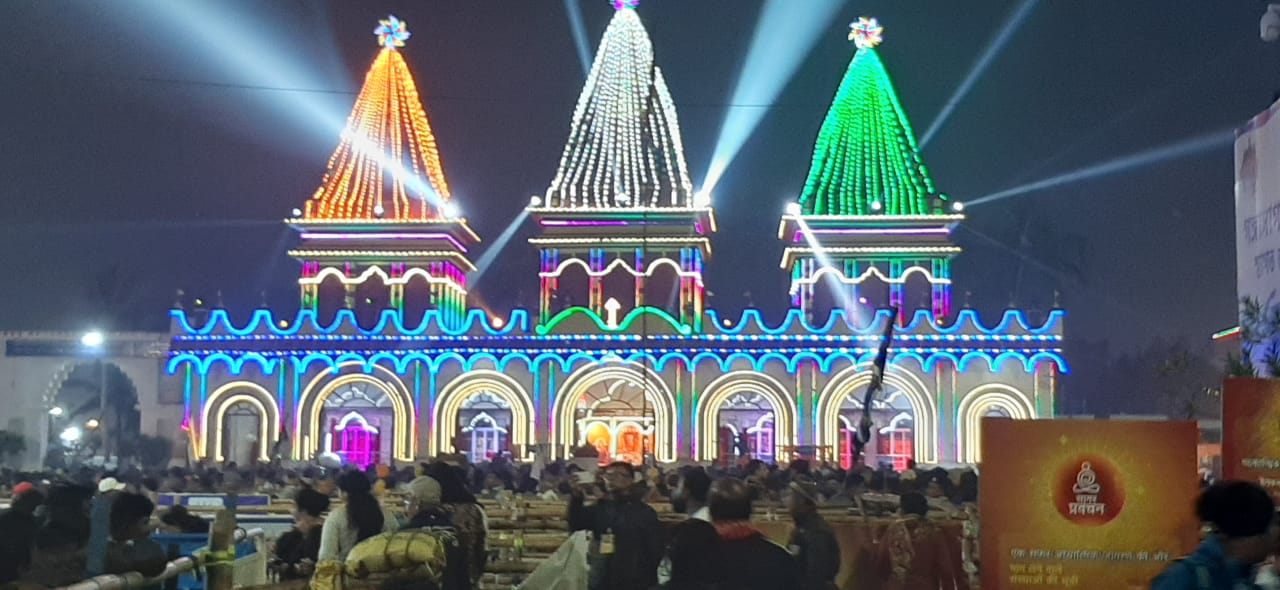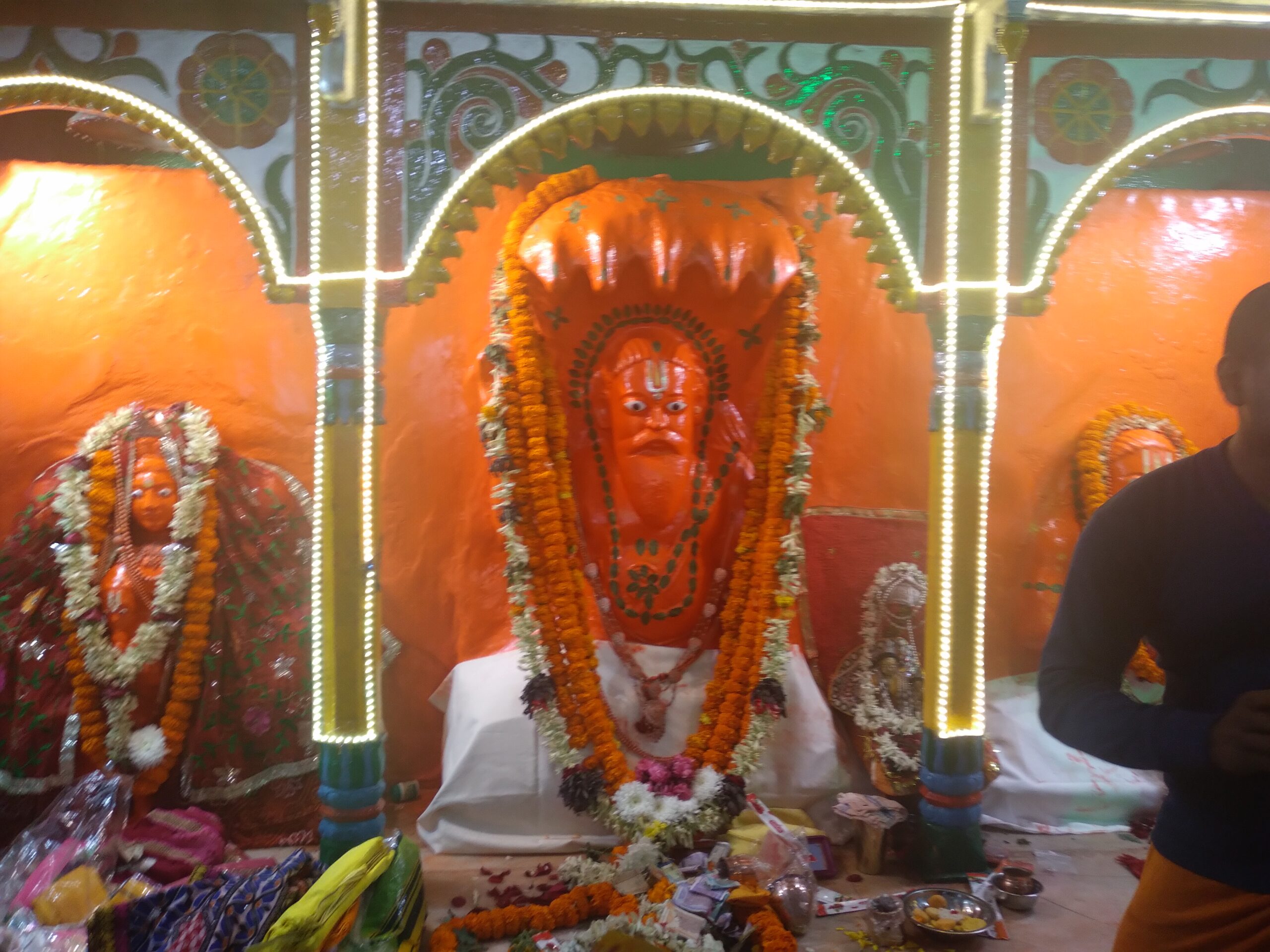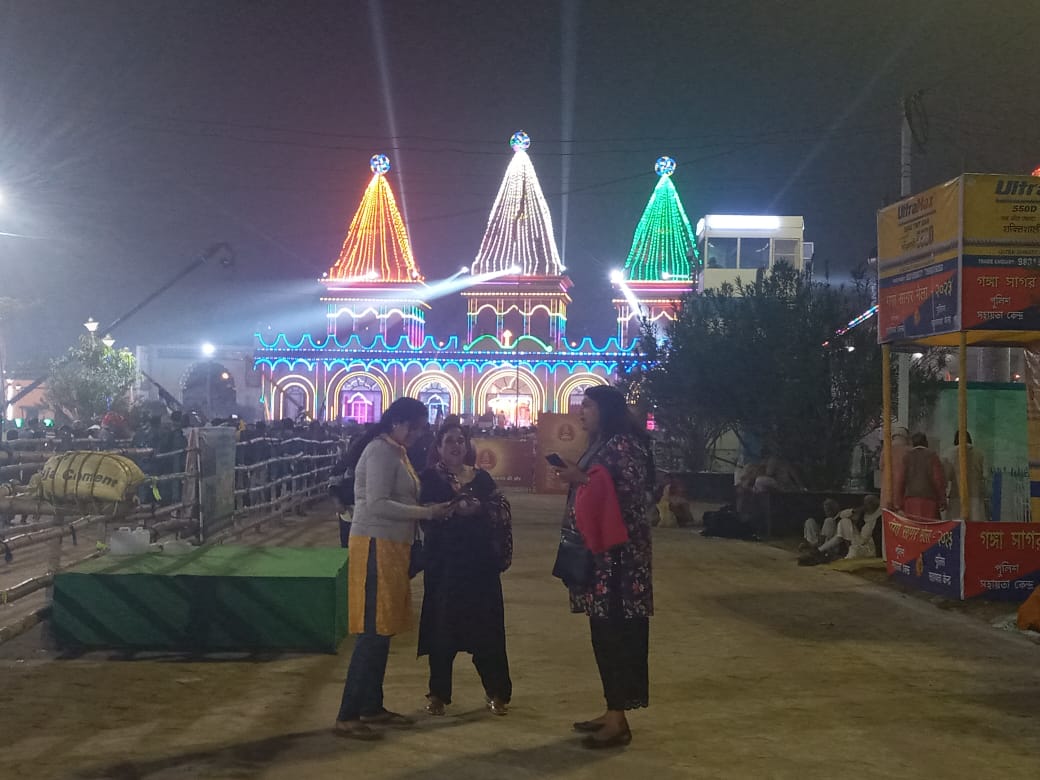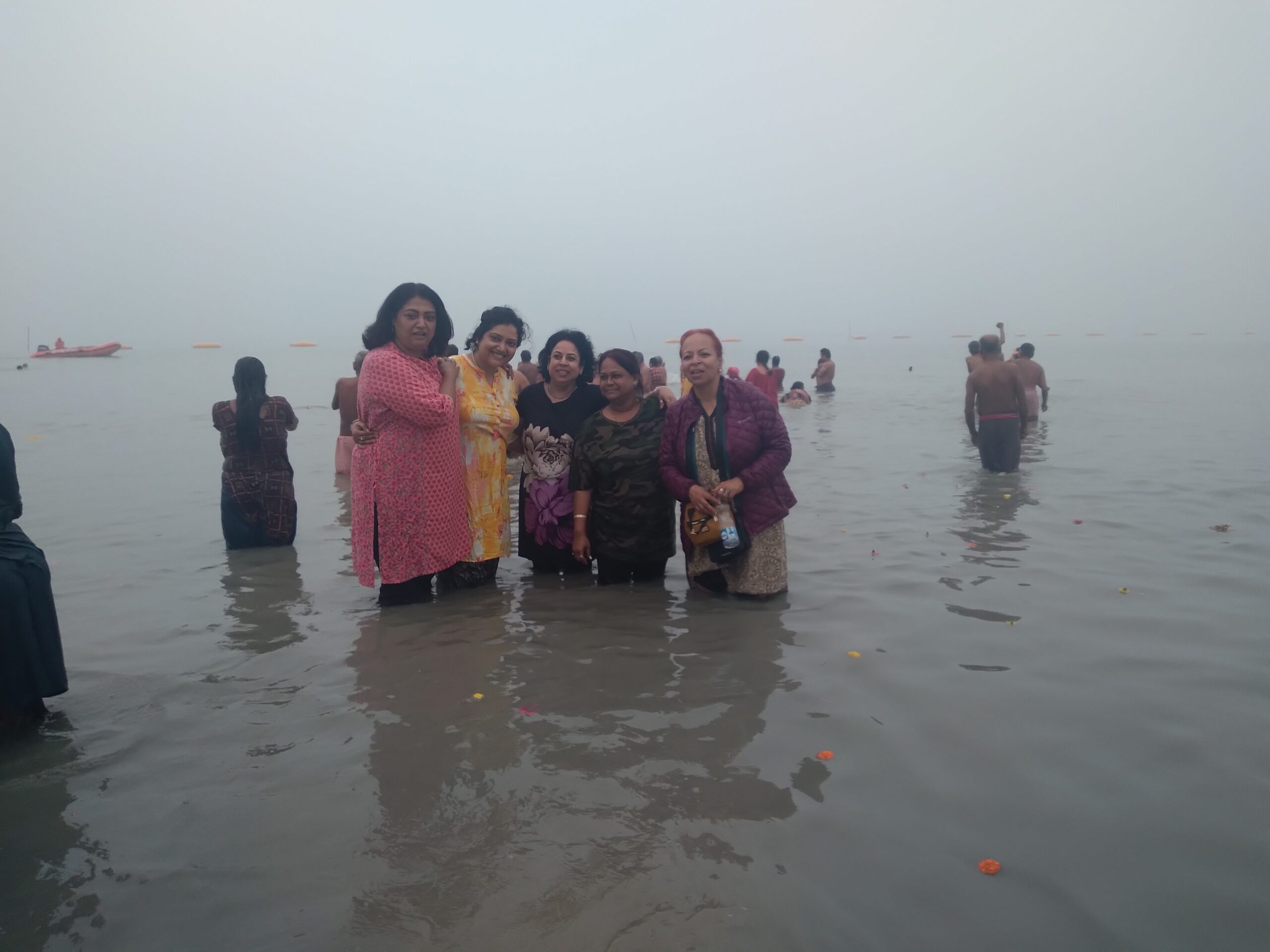Gangasagar: My tryst with spirituality and faith
Continued from the story, ‘Gangasagar: Waves of faith and in search of moksha’
Evening descended on the Sagar Island as the mela ground was swept by the sea of humanity. I could see from the two-storey building’s (where we had put up) balcony busloads of devotees arriving at the mela ground. Although weighed down by exhaustion, I saw sparkle in their eyes as they alighted from the vehicles. The sight of an old woman clutching tightly the hand of her son and tottering her way to the mela ground symbolised the pilgrims’ unshakeable faith and spiritual aspiration.
John Bunyan’s spiritual classic The Pilgrims’ Progress came to my mind. Well, the journey there was from the City of Destruction (representing Earth) to the Celestial City (representing Heaven).
Brilliantly illuminated Kapil Muni temple
Meanwhile, the public address system kept announcing the names of the missing persons, asking the concerned families to contact the organiser. The mela ground was brilliantly lit up. I went downstairs trying to mingle with the crowd to feel the pulse of the pilgrims. “I’ve come from Allahabad with my septuagenarian mother to take a holy dip,” said Bipin Varma, a banker. “I’ve no complaints about the arrangements made by the district administration. They’ve done an incredible job.”
I woke up at 5.30am the next day (January 15) and got ready for the holy dip. By the time I reached there, lakhs of devotees and seers had already taken their bath at the confluence of the Ganga and the Bay of Bengal, braving the cold. “I just had my holy dip for which I had been waiting for years,” said a young woman from Ujjain, MP. “My parents also took their bath to wash away all sins and set them free from the cycle of birth and death.”
“I’ve been coming here for the past 10 years and will come next year also,” said an old Naga sadhu from Jammu.
Idol of Kapil Muni
Crowds gather in front of the temple
I finally took my holy dip at that brahma moment and proceeded to Kapil Muni’s temple to offer puja. Construction of the present-day Kapil Muni Temple was completed in 1973 with the state government’s aid after a number of temples had been destroyed by natural calamities.
More than 50 million pilgrims reportedly visited the mela this year.
There is a saying “Shob teertha baar aar, Gangasagar ekbar” (You can visit another pilgrimages several times, but you can come to Gangasagar only once). As I left the mela ground, I thought I was fortunate to take the holy dip during that auspicious moment.
Mela over, but my memories of Gangasagar and the pilgrims’ journey will remain forever—a journey symbolising spiritual aspiration, profound faith and deep devotion.
A peek into history
The myth of Gangasagar is all about the tryst between the circle of life and death and the allure of Moksha. And the heart of this devotional destiny is the iconic Kapil Muni temple.
‘Sagar Raja’, the ancestor of Lord Ram and ruler of the Ikshvaku dynasty, decided to perform the Ashwamedha Yagya as directed by Sage Aurva. It was believed that performing 100 Ashwamedha Yagyas would help one gain dominion over the entire earth. Lord Indra (the King of God according to Hindu mythology), the only one to complete the 100 Ashwamedha Yagya, feared that he would lose his ascendancy to a mortal, and hid the sacrificial horse near Kapil Muni’s hermitage.
Irate Sagar Raja sent his 60,000 sons (Sagar Putras) to find out the missing horse. The Sagar Putras decimated everything on their path and reached the Sage’s ashram. Upon discovering the horse, the Sagar Putras mistook the Sage for the thief and started hurling abuse at the meditating sage. The commotion hindered the Sage’s meditation. Enraged, Kapi Muni opened his eyes and turned the 60,000 Sagar Putras into ashes, condemning their souls to hell.
Years later, Angshuman, Sagar Raja’s descendant, discovered the horse still standing at Kapil Muni’s ashram. He performed austerities to please the Sage. Content with Angshuman’s effort, the sage gave his permission to retrieve the horse and learned that the souls of his ancestors could only be freed after performing Shraddhas with the holy water of the Ganges. Raja Angshuman and his son Dilip couldn’t complete the Shraddhas because Agastya Muni had drunk all the water from the ocean due to a severe drought.
A generation later, King Bhagirath undertook the task of freeing the condemned souls and prayed to Lord Brahma, the creator, to free his ancestors’ souls. He asked him to pray to Lord Vishnu to allow the holy Ganga to ascend on earth. Upon agreeing, he cautioned that the sheer force of the Ganges would wipe out the entire creation if it went unchecked and asked him to pray to Lord Shiva. Shiva agreed to bear the entire force of Ganga on his matted hair. In the meandering labyrinth of Shiva’s hair, Ganga lost her brute force and descended on the earth, gently caressing all existence. Bhagirath was finally able to perform the last rites of his ancestors, liberating the souls from the fires of Patal Lok.
With passing years, the myths turned into legends, legends into stories, and stories into beliefs. The river Ganga was also given the name Bhagirathi, after Raja Bhagirath, and the sea got its name ‘Sagar’ after Sagar Raja and the island, Sagardwip.
(Concluded)
